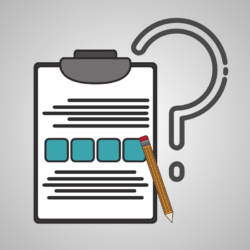
Defining a business continuity plan isn't simple. Business continuity varies from business to business, and each plan is unique. Depending on how your business operates, you may think about it a lot differently than another business owner. At it's most basic definition, a business continuity plan is a written document that business can use to ensure that their business systems and processes continue functioning during an emergency or disaster. Of course, even emergencies and disasters have thousands of definitions. These could be natural disasters like floods, fires, or a blackout. They could be internal disasters like a human error, an employee with a family emergency, or an angry employee. As a business owner, you need to be prepared for all of it.
At it's most basic definition, a business continuity plan is a written document that business can use to ensure that their business systems and processes continue functioning during an emergency or disaster.
Business Impact Analysis
First things first - make a list of everything that needs to continue happening during an emergency to keep your business running. What's most important? What could wait for later? How long would your business survive if you couldn't get your product to the customer, couldn't answer your phones, or couldn't process customer payments? Use a Business Impact Analysis to plot out which business processes are most important, and the amount of impact they will have on your company or your customers should the processes stop.
Risk Analysis
Have your managed service provider or an unbiased third party perform a risk analysis of your company. This will identify any vulnerabilities in your systems and processes that could leave your business susceptible to outside threats such as viruses and hacking. This is typically a relatively painless practice, and shouldn't take more than a day to complete.
Acceptable Downtime
Once you've got your list of business processes ranging from most time-sensitive to least, you'll need to jot down the number minutes, hours, or days these processes can be put on hold before they start to critically damage your business. If you can only have your computers down for an hour, but could maybe survive without your phones for a day, note that down. This will help you later on with your step-by-step plan to get your business back on its feet.
Disaster Recovery
As a central part of your business continuity plan, you must develop a disaster recovery plan. This plan will specifically define the required restoration time of those time-sensitive business processes you listed in the above step.
Put Together Your Plan
At the very top of your business continuity plan should be contact information for emergency responders, the leadership team, and your managed service provider or IT staff. Make a list of all the vital equipment that may need to be checked/fixed, and where your company keeps their backup devices. Next, list out each and every single step that needs to take place during each phase of an emergency. Make sure to note who is responsible for each step, as well.
Test Your Plan
A business continuity plan won't benefit you in the slightest if it remains stagnant. Test your plan often, get your employees involved, and work out the kinks. You'll be thankful you did when a disaster strikes and your employees are prepared.
Remember, a business continuity plan should be discussed with your insurance agency and managed service provider. They will be able to help you create a document that you can rely on to get you through a disaster.



